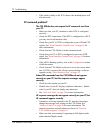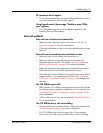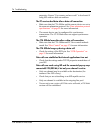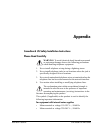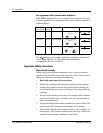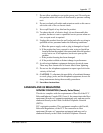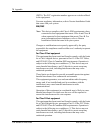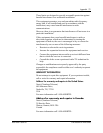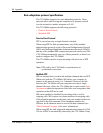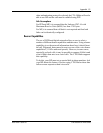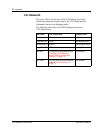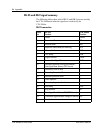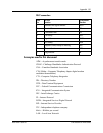
80 Appendix
CTA 500
dm
On Line Guide P0873832 Issue 05
Rate adaptation protocol specifications
The CTA 500dm supports two rate adaptation protocols. These
protocols allow data leaving the computer to be properly carried
over the network to another computer or LAN.
The CTA 500dm supports the following protocols:
¥ Point-to-Point Protocol
¥ Multilink PPP
Point-to-Point Protocol
PPP is used when only a single channel is desired.
When using PPP for dial-up connections, any of the standard
authentication protocols (such as Password Authentication Protocol
(PAP) and Challenge-Handshake Authentication Protocol (CHAP)),
and any of the standard PPP compression protocols can be used. The
CTA 500dm automatically uses any of these protocols, so there is no
need to conÞgure the CTA 500dm.
The CTA 500dm can also accept incoming calls when set to PPP
operation.
Note: PPP used by the CTA 500dm is asynchronous-to-
synchronous conversion.
Multilink PPP
MP is a protocol that is used to link multiple channels that use PPP.
When used with the CTA 500dm, MP allows your computer to
connect to the network using 1 or 2 channels. However, the link
between the CTA 500dm and your computer uses only a single
channel. Because of this, the CTA 500dm has to make certain Link
Assumptions about the operation of the links, and it negotiates link
operation so that MP can be used.
MP can be enabled or disabled for incoming calls as well as
outgoing calls. MP requires two phone numbers for outgoing calls.
If the telephone numbers are the same, only one number needs to be
speciÞed in the dial command. If the telephone numbers are
different, the & character must be used in the dial command (see
ÒDial CommandÓ on page 44 for more information).
When using MP, the only supported authentication protocol is PAP.
The use of PAP is automatically detected by the CTA 500dm. If any




